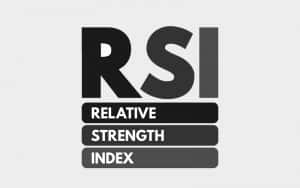The numerous unit measurements traders use when trading is as diverse as the financial markets they partake in. Points, ticks, and pips sound like terms you’d find in a sci-fi novel. However, each of these exists for a specific reason and is unique in measuring the variances in prices.
In many cases, certain terms are exclusive for a specific instrument, while others may find mention in other markets and trading jargon. Points, ticks, and pips are three of the most commonly used units for measuring prices in traded instruments.
Traders use them in their respective niches to calculate the difference in the spread and other trading costs and express the extent of their profits and losses. They also play a part in position sizing. So let’s find out what each of them means, their relationships, and where they’re used in the financial markets.
What is a point?
A point refers to the whole number change to the left side of the decimal in the price of a financial instrument. It is the most generic measurement used primarily in stocks and to an extent in a few other markets depending on the analyst.
Let’s illustrate how a point is calculated. For example, if a stock rose from $200 to $205, we would cite this as a five-point increase. It’s important to note analysts would not refer to a $5 drop with this scenario.
The key factor for traders using points is assessing the percent change certain points might have on different stocks. For example, a more expensive stock worth $1000 increasing by three points is only a 0.3% percent increase (3/1000 X 100).
Contrastingly, a $1 stock going up by the same number of points reflects a 300% percent rise. When traders use points to mention price variances, a dollar or currency equivalent amount is attached.
What is a tick?
A tick is a fractional calculation of a point and denotes the smallest change in a security’s price to the right of the decimal. Ticks are quite universal and used extensively in futures, indices, commodities, and stock trading.
Some forex traders might still denote price discrepancies in ticks as they refer to the variances to the decimal’s right side. However, the majority use pips since they are more specific to forex (covered in the next section).
Before going over an example of how a tick is expressed to understand better how it works, we should note the tick size varies according to the instrument. For example, with the E-mini S&P future in the Chicago Mercantile Exchange, one tick has historically been a quarter of a point.
So, if this security moved from 3000 to 3000.50, we would indicate a two-tick difference. If a trader wanted to measure their profit or loss with this move, since the tick value for this security is $12.50, they could gain or lose $25.00 if they were trading one contract.
In some markets like stocks, the word itself, ‘tick,’ also describes price direction, whether up or down, i.e., uptick or downtick. The price and monetary value of a tick will vary from instrument to instrument, and it’s critical to know beforehand for risk-centric position sizing.
What is a pip?
A pip, which is shorthand for ‘percentage in point,’ shares some similarities with ticks but is used exclusively in foreign exchange and metals paired with currencies like XAU/USD and XAU/EUR. Cryptocurrencies also utilize pips.
A pip is the tiniest standardized move an exchange rate changes over a defined period. The vast majority of currency pairs are quoted to four decimals, with the exception of some Japanese yen pairs that are quoted to two decimals. In addition, many brokers and trading platforms add another decimal, which is known as a micro pip or pipette.
Let’s look at the conventional four-decimal price difference. For example, if EUR/USD moved from 1.2172 to 1.2175, this would be three pips. Like in futures, the monetary value of a pip varies across the board depending on the traded pair, its exchange rate, and the position size on the trade.
Though a broker provides calculators to measure the value automatically, it’s still helpful to note nonetheless. Traders take the current exchange rate divided by 0.0001 and multiply that by their position size.
For instance, if the price of NZD/CHF were 0.8950, the pip value for a standard lot (100 000 units) would be $11.17 (0.0001 / 0.8950 X 100 000). The exception to this calculation is if the quote currency is USD, i.e., EUR/USD. In this scenario, the pip value remains the same at $10 for a standard lot.
Final word
Points, ticks, and pips are the three main units of measurement for price changes in the popular financial markets. While similarities do exist, each of these metrics is particular to specific instruments.
Knowing how to measure price differences is essential for calculating the extent of movements and, more importantly, is the foundation for position sizing and understanding the monetary impact.
Let’s briefly summarise what a point, tick, and pip are.
- A point denotes the tiniest price change on a decimal’s left side
- A tick denotes the tiniest price change on a decimal’s right side
- A pip performs a similar function to a tick but is exclusively only to forex and crypto



